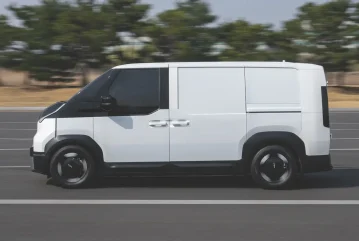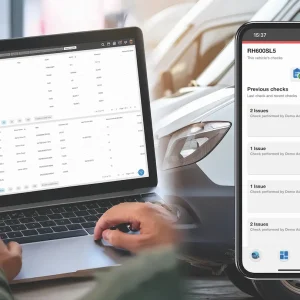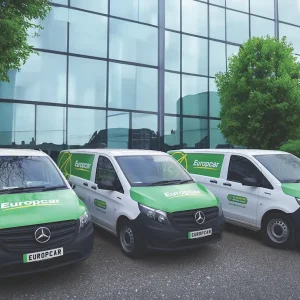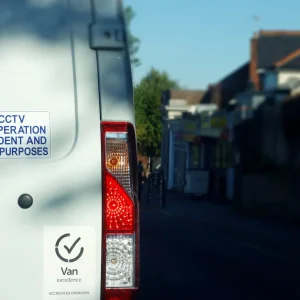
It’s been the most talked about and highly anticipated new van in recent memory, so finally getting behind the wheel of the new Kia PV5 feels like it has taken an eternity.
Since its unveiling as a concept in January 2024, information has been gradually drip-fed out from its sizes, motor and batteries through to final confirmation about payload and dealer network.
You’ll have read on this site about much of that, but now it’s finally time to sample the real thing with a prototype drive of the PV5.
Kia’s entry into the van market was announced at its 2023 Investor Day, where CEO Ho-Sung Song revealed the Korean manufacturer would be turning its attention to the global commercial vehicle market.
Speaking ahead of our prototype drive about the market Kia hopes to target with its PBV (Platform Beyond Vehicle) range, Song said: “Our main goal is to establish a strong presence in the overall LCV market and specifically target B2B customers with our PBVs. PBV is a newly developed vehicle based on a dedicated EV platform but will have the same price competitiveness as its competitors’ derivative EVs.”
With potential customers having now been able to get close to the van, after its UK debut at the CV Show in April, the PV5’s place in the market is becoming more apparent. Staying true to the concept in both looks and scale, the PV5 will sit in a category of its own as an enlarged city van, capitalising on its compact footprint, but relatively high-volume load space. As such, Song believes the PV5 will be seen as an alternative to a wide range of current vans.
“The PV5 has competition from major OEMs such as Citroen, Renault and Ford,” he said.
Our initial impression is that will indeed be the case, with long-wheelbase models of established names like the Berlingo and Transit Connect clearly in the crosshairs, but also the short versions of medium vans like the Renault Trafic.
At Kia’s Hwaseong plant on the outskirts of Seoul, we were able to experience an early pre-production model of the van which, although fitted with several plastics not representative of the finished van, gave an indication of the product which will now arrive in the UK in just a few months’ time.
Our test drive wasn’t exactly the in-depth experience we are used to, with a mirror smooth surface barely long enough to land a light aircraft the chosen venue for our drive. Permitted to do only a few lengths – as well as some exaggerated steering and heavy braking – it was, however, surprisingly informative.

Unsurprisingly, given the surface, the ride comfort was immaculate, but it also felt surprisingly soft for a commercial vehicle. There was very little to unsettle the suspension, but destabilising the van revealed that there was a softness to the overall ride. With light and heavily assisted steering, it added to the soft feeling of the van, which given its higher centre of gravity than a normal small van, was exaggerated still further. It’s hard to be overly critical of the ride, as without a corner we were just throwing it into a tight curve to see how it handled at its extremes.
One factor immediately apparent, though, was the driving position. A forward seating position makes it feel like quite a dynamic van, but it’s also comfortable thanks to a fully adjustable steering wheel, with a good range of motion.
The double A-pillar was initially a concern for visibility, but it’s less of a problem once on the move. However, because of that advanced seating position, the mirrors do feel very close to you. Sight lines though are good all-round and it feels like a well-balanced van to drive, while its short wheelbase means it has a great turning circle, which will appeal to urban drivers.
Power comes from a 120kW motor, with 250nm of torque, which is above average for a small van. It doesn’t feel like an excessive amount of power though because the van feels bigger than it perhaps is. Its power output is in the middle of the E-Transit Custom’s range, but it’s not a fast van and we’re sure that if filled with its 800kg payload it would simply be sufficient. It’s a sensible driveline then, which is what you’d expect from a company wanting its new van to be taken seriously.
Regenerative braking comes in three levels, but without much space to try it we’ll reserve judgement. The brake pedal also felt soft, perhaps a nod to the city driving the van is likely to find itself doing.
The most obvious positive we can take from the PV5 is its noise levels. It’s a quiet van. There’s some noticeable wind noise, as you might expect, but nothing distracting. It’s not dissimilar to Kia’s passenger cars in this respect: comfortable, quiet, assured in quality and engendering a general positive feeling. The cabin is spacious, with ample room for knees and elbows. The controls also seem to be in logical positions, with important functions like heating and infotainment close enough to hand. The little idiosyncrasies often materialise after a while behind the wheel, but it’s reassuring that there are not alarm bells ringing. Kia appears to have done its homework to create an interior that’s very appropriate for the sector.
Kia’s strong reputation for its passenger cars has set the bar high for its PBV range and our early prototype drive has left us wanting to get behind the wheel of the real thing for longer. There’s a lot to like about the PV5, from the true-to-concept design of the production model through to the innovative use of the space normally reserved for something as mundane as a drive shaft. It’s challenging and it’s disruptive. It’s what the van segment needs. Whether these attributes will lead it to being a commercial success, we will have to wait and see, but not since the Volkswagen ID. Buzz has a drive in a prototype van intrigued me so much.

Small beginnings
Over the years in the LCV industry, I’ve driven scores of early products. However, I’m struggling to think of another example that came from an entirely new entrant to the market that plans to roll out a full range in rapid succession.
There’s no doubting Kia’s PBV project is an exciting one, but has it started off with the wrong model? There’ll be numerous reasons why Kia is launching its “small” van first, not least demand in its own domestic market, but focusing on Europe and the UK, I can’t help but think the PV5 will be a bit of an anticlimax, initially.
Small vans don’t really get people’s juices flowing while they’re also not really bought by the average Joes who turn up at your house to carry out jobs.
When I think of small vans, I think of anonymous fleet vehicles. As good as a Ford Transit Courier is, I rarely, if ever, find myself noticing them. If Kia were bringing the medium or large van to market first, I’m sure it would have a lot more impact and “stage presence”. I hope the small van doesn’t get forgotten about amongst the masses.
George Barrow is the UK judge for the International Van of the Year, the prestigious prize awarded by leading European LCV journalists.





